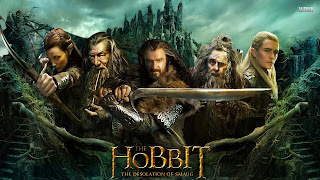Digital distribution is to every extent a vital part of the current film industry. In past years, the digital distribution of films, like streaming, was important to the business but now it has become the life blood. The coronavirus safety restrictions were the main cause of this since (mid March) when movie theaters were closed, film festivals were rescheduled, and all current movie filming was canceled. This made the distribution of films almost entirely digital, as streaming services became the only way to view newly released movies.
The closing of movie theaters significantly impacted the amount of revenue the film industry made because there was nowhere to watch! However, the revenue made by the cinemas had already been affected by the streaming services. In 2018, U.S. Movie theaters made 10.35 billion dollars on movie ticket sales and 5.64 billion on concessions, making an estimated total of 15.99 billion dollars. Meanwhile, 50% Americans spend around 2.1 billion dollars on streaming services monthly, making that roughly 25.2 billion dollars per year, which is 9 billion dollars more than cinemas. This disparity is bound to grow in the coming years to show how streaming has become more lucrative, since it is one of the only remaining options to watch movies with. Clearly, this shows how important digital movie distribution is to the film industry’s economy.
Film festivals used to be the perfect way for indie films to gain popularity. One example of a film’s success is A Quiet Place. It premiered on March 9, 2018 at the South by Southwest Film Festival, then was re-released in theaters on April 6 by Paramount Pictures. Now, however, film festivals around the world have closed and as of March 6 this year, the South by Southwest Film Festival also closed because of the virus. Despite their small budgets and lesser popularity compared to their mainstream counterparts, indie films are still an integral part of the film industry. Indie producers don’t usually have the money or the prestige through brand recognition to start their films straight on a streaming service, which is where these services can fall short of supporting the industry in it’s time of need.
Starting in 2008, the popularity of DVD’s have decreased as the streaming service industry increased 1231% in the last 9 years. As DVD sales declined, so did it’s revenue stream that supported the industry. The streaming industry’s overwhelming success in the economy made it so the consumers didn’t feel the loss as strongly as they would have in other circumstances. Although the DVD’s popularity was already on the decline, they still brought in some revenue for the whole economy of the film industry. This limited amount of revenue was cut off abruptly once stores closed due to the outbreak. The option of streaming became more appealing and picked up the DVD sale’s slack because of the enforced social distancing measures. On the other hand, there are services like Redbox that act as a grey area. Services like that have some digital aspects where the films can be rented online, and these companies have also branched out into the streaming market like FandangoNow. Although these gray-area services are still open, despite the coronavirus, they greatly rely on digital means to get the films distributed.
Streaming services are the newest and most popular electronic film distribution method and as such there are many different services to choose from: Xfinity, Hulu, Netflix, Disney+, HBO, Amazon Prime Video and more. They have steadily grown in popularity; 50% of Americans are subscribed to at least one streaming service and similar things can be said about the rest of the world. For example, Disney+ and Netflix are set to see a 12% increase in usage because of social distancing. To accommodate these changes, the services are adapting. Specifically, the changes are a temporary convergence of the technologies used by cinemas and the services to make up for the lack of other options. For instance, movies that would have been released in theaters are now available on streaming services for an increased rental price. Trolls World Tour can be rented on Xfinity for $19.99. Additionally, it was available through Video on Demand for only about a month after it’s release date of March 11, 2020 then on April 10th the option to purchase it was introduced. This sell-through mimicked a cinema, presumably to make up for the lost revenue. These changes help the streaming services keep up with demand since they are being forced to be more relevant today than previously expected; what was a gradual convergence of streaming and cinema’s has now become instantaneous in the weeks since the closure of the cinemas. This forced physical and mindset change was made easier by the earlier efforts of the Disney conglomerate with the creation of Disney+. They also synergized with their subsidiary, Hulu, to create an appealing package deal. The marketed subscriptions purchased by viewers unwittingly eased the switch from watching movies in theaters to streaming services because of the inherent prestige associated with the Disney brand. These subsequent changes have made these digital distribution services all the more vital to the film industry.
The solutions presented by the film industry must be stable to keep up with the changing landscape and unknown future created by the coronavirus. Already theaters around the world are planning to reopen, and some people might or might not attend; but, as life starts to resume as normal, the possibility of a resurgence looms. This means there must be permanent changes to the film industry, and they must stand prepared to defend their revenue. Currently and in the foreseeable future, digital distribution will prove vital to the film industry.















